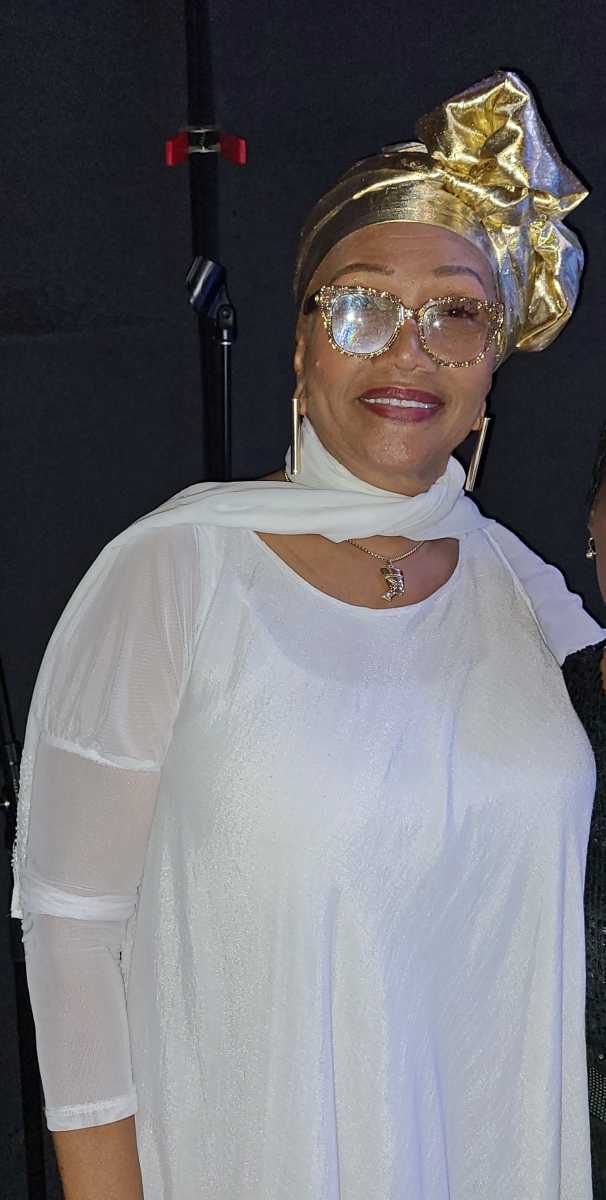BY JERRY TALLMER
‘Staggeringly brainy play’ stirs together physics, espionage, love
Think of it this way:
An actor is but a particle of a person, unless of course he (or she) is several particles of several persons — in, for instance, a staggeringly brainy play by Tom Stoppard that stirs together quantum mathematics, particle physics, love, death, espionage, a London swimming pool and a handful of post-Shakespearean twins who may or may not be double (or triple) Cold War secret agents — theirs and ours.
The play is called “Hapgood” — which is also the masculine-sounding name of its undeniably feminine heroine and her even more feminine quasi twin sister.
We are never told what dire nuclear secrets are in a briefcase that keeps changing hands in and around the dressing rooms of that London swimming pool, just that those secrets are dire and that one of the participants in this hugger-mugger is referred to as Russian One.
“We call this man Russian One,” says a typical Stoppard notation, “because he is Russian and because there are going to be two of them.”
“Hapgood” was written in Orwellian 1984 — 18years after the “Rosencrantz and Guildenstern” that put Stoppard on the map as an upcoming playwright of consequence. That was also, as it happens, one year after U.S. President Ronald Reagan launched his pie-in-the-sky Star Wars anti-missile program.
To Craig Smith and Elise Stone, stars of another kind, the acting kind — they are also two of the prime movers of the seven-year-old Phoenix Ensemble — no play could be more timely. Indeed Smith and Stone, husband and wife, are saying this to me just a day or two after one lone U.S. senator — a Republican gentleman from Arizona — has thrown a screw-you-Obama monkey wrench into any renewal or extension of the nuclear-reduction START treaty.
“Stoppard is such a careful playwright,” says big, sensible, graying Smith — who in this “Hapgood” portrays Blair, the head of a CIA-type London-based intelligence operation that has Lily Hapgood (i.e., short, dark, beautiful, fiery Elise Stone) as one of its most prized agents.
“With particle physics,” says Smith, “once something is observed it is changed.”
Einstein in a nutshell?
“Absolutely. Meta-theater.”
“Which changes from night to night,” says his wife.
“I am not a mathematician,” voracious reader (of everything) Stoppard told an interviewer for the Paris Review in 1988, “but I was aware that for centuries mathematics was considered the queen of the sciences because it claimed certainty. It was grounded on some fundamental certainties — axioms — that led to others.
“But then, in a sense, it all started going wrong, with concepts like non-Euclidean geometry — I mean, looking at it from Euclid’s point of view. The mathematics of physics turned out to be grounded on uncertainties, on probability and chance. And if you’re me, you think — there’s a play in that.”
From non-Euclidean geometry it was, for Stoppard, just a hop, skip and jump to quantum mechanics. “So I started reading about that.”
And came up with, Stoppard style — uncertainties, probability and chance as such things might apply to characters who, in Smith’s words, “are able to and not be there.”
As, for instance, if you’re twins. One of a pair of twins.
Russian One, for instance — is he or isn’t he? Mrs. Hapgood, for instance — is she or isn’t she? And what will she do — which Hapgood will she be — to get her kidnapped son back from the bad guy(s)? The kid is, 11-year-old Joe (13-year-old actor Jack Tartaglia), a British schoolboy as Czech-born Stoppard was once himself a British schoolboy.
Except that Joe’s father just happens to be Joseph Kerner (actor Joseph J. Menino), Soviet nuclear physicist and double (or triple?) defecting secret agent.
Which is how Stoppard writes plays. Wheels within wheels. A riddle within a mystery within an enigma.
So: Is she is or is she ain’t? Is the brisk smooth Hapgood the same physical entity as the slipshod, druggy, beatnik Hapgood, played by Elise — is she a twin or is she not?
“I have a very small window of opportunity,” says Ms. Stone of hers and the play’s climactic double-exposure moment. “I only have seconds.”
“As long as it takes to do a really fast costume change and let your hair down,” says the sturdy Midwesterner who married this vibrant girl from the Bronx back when they were acting together for all those years at the late Eve Adamson’s now defunct Jean Cocteau Repertory in the Bowery Lane Theater on the corner of Third Avenue and Bond Street.
“Which is now an upscale retail store,” Stone informs me. But back in the day, Cocteau Rep devoted itself to serious productions of serious plays old and new, of many genres, including this one — a year-to-year wide-ranging nourishing spectrum you could seldom find anywhere else in town.
“Were you ever in Kaliningrad?” Kerner asks the unmarried Hapgood he still loves so much, as they watch their son Joe kick a rugby ball past the goalie into the net.
“Í was born in Kaliningrad,” Kerner tells the boy’s mother. “So was Immanuel Kant, as a matter of fact. There is quite a nice statue of him. Of course, it was not Kaliningrad then, it was Konigsberg, seat of the Archdukes of Prussia. President Truman gave Konigsberg to Stalin. My parents were not consulted and I missed being German by a few months.
“Well, in Immanuel Kant’s Konigsberg there were seven bridges. The river Pregel, now Pregolya, divides around an island and then divides again, imagine nutcrackers with one bridge across each of the handles and one across the hinge and four bridges on to the island which would be the walnut if you were cracking walnuts.
“An ancient amusement of the people of Konigsberg was to try to cross all seven bridges without crossing any of them twice. It looked possible but nobody had solved it” — and then, finally, years later, the Swiss mathematician Leonhard Euler proved it can’t be done.
All of which, Stoppard confessed to the Paris Review interviewer, replicates — or is replicated by — all that who’s-got-the-briefcase wild-goose-chasing in and around those swimming pool lockers in Act I.
Which is also how Stoppard writes plays. Crossing over unseen rivers to imaginary islands via impossible bridges.
Though the Phoenix Theatre Ensemble is a communal organization “with around seven artistic directors,” Smith admits he might have been the first to come up with the idea of doing a group reading of “Hapgood” to hear how it might go across in 2010.
Stoppard — though Smith and Stone never met him or even talked with him — was no stranger to them. They’d been in lots of his stuff at the Bowery Lane. And indeed, over the years, I myself have been engrossed and delighted by Cocteau Rep’s attentions,” and “Night and Day.”
In short, “Hapgood” fits perfectly into the Phoenix Ensemble’s dedication to what Smith defines as “language-oriented intelligent theater — classic classics and modern classics.”
The Smiths live in the East Village, not far from the theater where they go to work nightly in “Hapgood.” (They also go to work in daytime jobs, always have, to pay the rent, he for a publishing house, she as a teacher.) If Lily Hapgood has one child, well, the Smiths have three, two boys and one girl, all three from Ethiopia.
Toward the end of “Hapgood,” physicist Kerner is applying an anecdote about world-famous physicist Niels Bohr to explain the uncertainty principle.
“Niels Bohr,” he says, “lived in a house with a horseshoe on the wall. When people said, ‘for God’s sake, Niels, surely you don’t believe a horseshoe brings you luck,’ he said, ‘no, of course not, but I’m told it works even if you don’t believe it.’ “
So much for Bohr via Kerner via Stoppard. Seems to me I’ve heard that same story before, only then it was Einstein’s wall on which the horseshoe hung.
That’s what’s called the Double Uncertainty Principle.




































